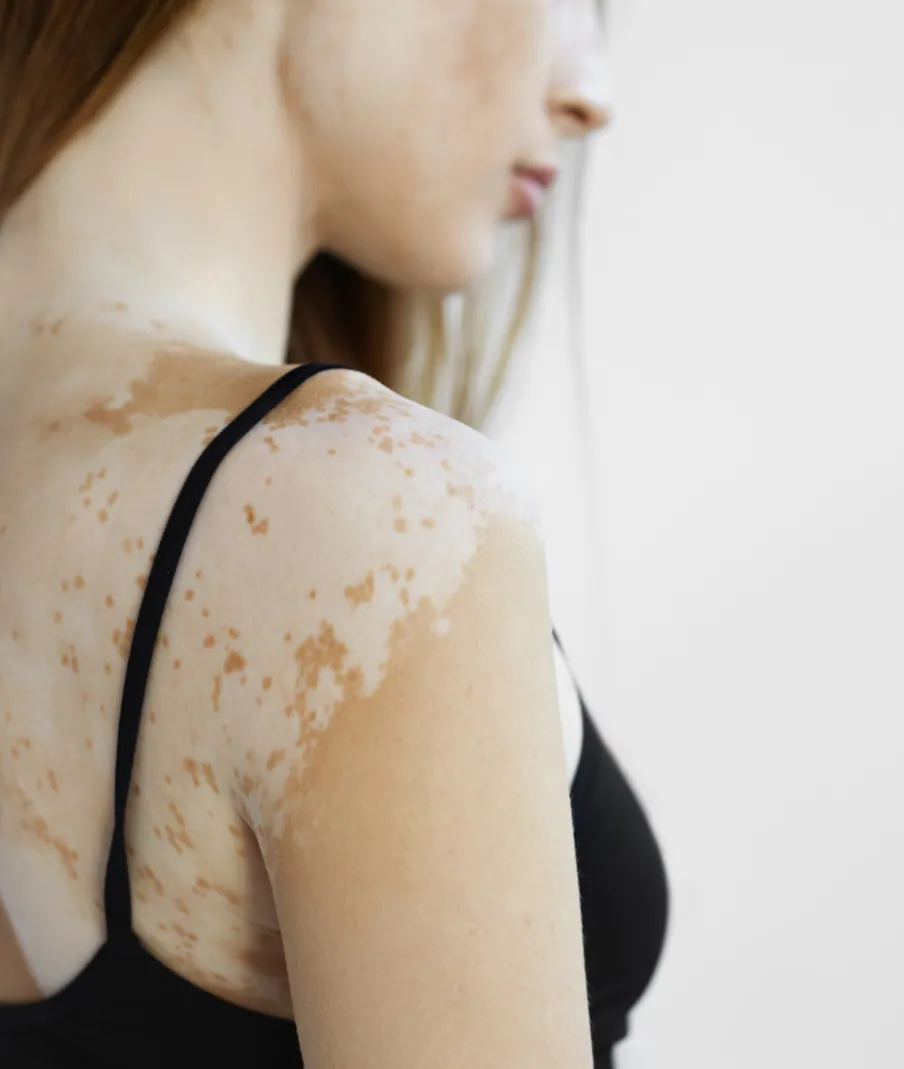
Vitiligo Treatment Options
4.99
3k+


4.99
3k+


A long-term condition causing patches of skin to become a pale white color due to a lack of melanin - the pigment in the skin. Simply put, your skin loses its natural color and develops white areas called “macules” or patches. Macules are less than five millimeters in size, and patches are five millimeters or larger. Some people with vitiligo report their hair turning white in their impacted areas. Vitiligo primarily begins in people in their 20s and starts to appear on the face, arms, hands or feet. Conditions typically progress over time, with even more areas of the skin losing pigmentation. People of all skin colors can develop vitiligo. Lighter patches of skin tend to be more noticeable on darker skin tones or tanned skin.
We diagnose and treat vitiligo in small, localized areas as well as generalized vitiligo that affects numerous areas of the body. With proper treatment, we have seen success restoring skin color for many patients.
We will prescribe a plan specific to your age, overall health, type of vitiligo, location on your body and how the condition is progressing.
We can use medicine and medicated skin creams, such as corticosteroids and light therapy, to improve skin color conditions. Treatment options don't end there. We can also treat you with pigmentation therapy, laser therapy, skin graft surgery, cell transplant surgery and camouflage therapy.

4.99
3k+

 Even the pros trust us!
•
Official Dermatologist of the Detroit Red Wings.
Even the pros trust us!
•
Official Dermatologist of the Detroit Red Wings.
 Even the pros trust us!
•
Official Dermatologist of the Detroit Red Wings.
Even the pros trust us!
•
Official Dermatologist of the Detroit Red Wings.
 Even the pros trust us!
Even the pros trust us!
Official Dermatologist of the Detroit Red Wings.

Even the pros trust us!